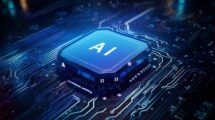The Dialogue, an emerging public-policy think tank delivered a conference on AI, Privacy and Cross-Border data flows and also released a Working Paper titled “Intersection of Artificial Intelligence with Cross-Border Data Flow and Privacy”, at the Constitution Club of India.
To know more about the study findings, we had a discussion with the founding director of The Dialogue, Mr. Kazim Rizvi. Here are the responses to the questions we asked.
How is India doing on the AI front when compared to other countries?
There are two aspects to this question. First, the ability to develop AI tech and second, the ability to deploy and adapt its use in the industry. On the first aspect with respect to,
Most growth in India’s Artificial Intelligence ecosystem has so far been organic and led by private enterprises- many of which are either closely connected to the global ecosystem. According to a 2017 study, the value of the industry stands at an estimated USD 180 million in annual revenues. Additionally, more than 800 companies are reported to be working with AI in some form or the other in India, which however accounts for just 6% of global AI companies.
We have been quick to adopt new technologies as a country. To their credit, the government has identified sectors (such as healthcare, manufacturing, transport) where they would like to leverage the capabilities of AI and published the same in NITI Aayog’s paper, #AIforall. Moreover, India is adopting AI at a rapid rate, making it one of the top 3 countries to do so (the other 2 being the US and China),. So while we have done well with the kind of AI we had, it is important to remember that a long road of AI development lies ahead. As the applications for AI expand into different sectors, the potential for advancement in India will also grow, making for lucrative prospects in the future.
To drive future growth of AI, we need a long-term vision to deploy AI in the military, including cyber-defence and to have a specific policy framework for its usage in these areas. Similarly, Skill India initiative should incorporate AI to not only upskill the present labour force, but to also be resilient to skills obsolescence through market-based instruments that tie together the employers, the training institutes, and the students.
Has the Government planned to incorporate AI?
There have been mixed signals from the government as far as AI is concerned. Rather promisingly, there has been acceptance of the potential AI holds for the economy, as evidenced by the NITI Aayog report. It shows that the central government or at least part of it, has given serious thought to how AI could help achieve a Digital India. Having said that, it is important to remember that the applications of AI are not just limited to the Government’s purview. In fact, more often than not in the case of technology, advancements are made in either Silicon Valley or Bangalore, which lead to governments playing catch up. The early signs of the attitude towards AI at least, are promising.
At the same time, the Ministry of Commerce constituted an AI Task Force that released its Report last year. It views AI as a socio-economic tool and has identified 10 key areas pertinent to India where deployment of AI may be beneficial. These are Manufacturing, FinTech, Agriculture, Healthcare, Technology for the Differently-abled, National Security, Environment, Public Utility Services, Retail and Customer Relationship, and Education
The Government of India has recognized the potential of Artificial Intelligence for the world’s fastest growing economy. The Budget presented by Finance Minister Arun Jaitley echoed this with USD 480 million allocated to the Digital India mission in the 2018 Union Budget, double of that in 2017. It also witnessed an increased allocation for NITI Aayog by more than 20%, defining a critical role for NITI Aayog in advancing AI and blockchain technologies. In a follow up to the same, the NITI Aayog in its Discussion Paper titled, “The National Strategy for AI in India” in June 2018 showcased India’s desire to join the AI race and its challenges owing to its late entry, as compared to the US and China. Also, Draft National Digital Communications Policy has empowered the Department of Telecommunication to provide a roadmap for AI and robotics. Similarly, the Department of Defence Production has also created a task force earlier this year to study the use of AI to accelerate military technology and economic growth.
While the government is planning to incorporate advancements in AI, it seems to be hindering the same when it comes to big data. Big data is the fuel on which AI functions, and the government seems to be bent on limiting cross-border data flows. There is plenty of evidence to suggest the same. Firstly, there is the Srikrishna Committee’s white paper on data protection that advocates for data localization, as well as the RBI circular which calls for all data regarding payments to be stored in India. Both these calls for localization can limit the amount of data that is available for AI to learn from, which can cause problems in incorporating the emerging technology going forward. To learn more about the localization agenda, you can access The Dialogue’s report.
What Sectors will be Most Influenced by AI?
AI will impact multiple economic sectors that have an effect on our daily lives and how societies survive and thrive. Right from manufacturing to jobs, to healthcare and agriculture, defence and logistics, fintech to education and retail sectors – all these will be influenced tremendously by AI going forward.
Based on the evidence available, AI is projected to have huge impacts on supply chains, logistics, and healthcare. One other area that is within reach of AI is job hunts and recruitment in general. Apart from AI processing resumes and applications at lightning speeds, AI-driven recruitment 10 years from now could have predictive implications. If given full access, AI could scan potential recruits on social media such as Linkedin, without even opening job applications and reach out to prospects based on their likelihood of joining, mentioned skill sets and/or interests. In effect, an AI-driven world could lead to the end of the job hunt in favour of the job hunting for you.
A common assumption, however, is thinking of AI as a monolith that can impact industries. The reality is slightly more nuanced. Not AI, but applications built from it will be the driving force within and beyond sectors. To that extent, advancements in sectors will depend largely on the scope and potential of apps that are developed using AI. The possibilities today seem endless, and as mentioned before, it is hard to make a definite conclusion regarding where AI can have the most influence.
How Credible are the Reports citing ‘AI Will Kill’ Some Industries Altogether?
As an organization, we believe that AI will not kill off whole industries, instead, it will transform them. Of course, there will be disruption, but that is natural with technological progress and you can go back in history where every technological step brought disruption, but also changed the way people went about doing things.
Let us break down this thought. One very real possibility that we face as a race is that of self-driving cars. Tesla is the pioneer in the industry and still admits that the element of risk will remain when AI is asked to make decisions on the road (which is also true for human drivers). Imagine a scenario where self-driving cars are the norm. So people with full-time jobs can drive themselves to the office and then task their car to act as an Uber, picking and dropping off passengers, scheduled to be back at a specific time. Not only will this make for an extra stream of income, but will also be more cost and resource efficient for the planet.
A casualty in this scenario could be the job of traditional Uber drivers. However, Uber (and any other similar app) could use the skills of these drivers to remotely monitor (and override) the decisions of these vehicles to avoid accidents, devising best practices to ensure the safety of the passenger. In this reality, the job of the Uber driver has not been killed but instead has been transformed to better serve human interests. This might require evolving of a skillset apart from driving, by learning the software that is used to monitor accidents, which could enable AI to learn more and become a better driver.
What are your Predictions on the Growing Trend of AI in Consumer Electronics?
The future for AI in consumer electronics lies in reducing clicks, cutting steps, and clicking better photos. Let us go through these in order. For instance, reducing clicks is something that is increasingly being implemented in operating systems worldwide. A host of Android phones today have a favourites section for phone calls that is driven by machine learning. So instead of choosing your own favourites, the smartphone tallies which people you call the most often and changes the favourites screen accordingly, no clicks needed. The same technology goes into, ‘Siri Suggested Apps/Actions’.
Cutting steps through AI is another cool feature that operating systems in consumer electronics are using increasingly. So if you commute using public transport every day, just reaching the metro station/bus stop can trigger your phone to send you directions to work and/or tell you the time of the next arriving shuttle or train. In another scenario, AI could use your location and when you visit a mall, could/and does today, supply you with a directory of the shopping complex you are visiting, cutting the step of having to look up locations of stores in a specific location at the mall.
Thirdly, AI today acts as a great tool to reduce the number of cameras used to take photos. You might recall the iPhone’s recently coming up with 2 cameras to capture depth in portrait photos. The Google Pixel line of phones achieves the same depth effect using just 1 camera backed with AI. This reduces the need to install a bigger bump on the back of phones and can have more than just the depth application. For instance, AI can be used to click better photos in the dark, a feature being used by the ‘Night Sight’ mode in Google Phones. The AI algorithm stitches together lighting from multiple photos (shown in the pictures below), making for a better shot. In sum, the inclusion of AI in consumer electronics makes consumer electronics ‘smarter’.
Where are we on certain legislation to keep a check on AI?
At the moment, we don’t have legislation or a policy framework that will guide the deployment and development of AI, or even help regulate or legally understood. There is yet to be a system of standards, checks, balances, and oversight in place.
We will have to amend existing laws, procedures as well as bring in new frameworks to guide its usage and fill the gaps. However, before we get there, what we need is a basic set of guidelines to start with, which should be met on a national level for any AI activity – indigenous, foreign or even modifications to an open source AI, that will eventually evolve into frameworks.
Government support in AI research and development is critical to its development, as demonstrated by the USA and China. The Indian government must provide the necessary policy framework and incentives, including direct funding to select companies, start-ups and research institutions, to ensure targeted capacity development.
Let us know about a few key findings of the study.
Our study on AI is a working paper that examines the relationship between data, AI, and privacy. The potential of moving data across borders is critical to drive AI growth, maximize use of cloud services as well as leveraging other emerging technologies that offer real-time services. Every day, large amounts of data flow course through the internet, over borders and between individuals, firms, and governments to power the internet and associated technologies. This data may originate from many sources located in multiple jurisdictions, making it imperative that data can move freely across borders.
Privacy mechanisms that facilitate such data flows are also essential to the continued growth of the digital economy. The paper discusses some privacy by design techniques that organizations can embed and at the same time maximize the AI potential: Differential Privacy, Homomorphic Encryption, Generative Adversarial Networks. Barriers to cross-border data flow undermine firm competitiveness and economic productivity as well as undermine innovation and access to innovative services.
For continued AI growth, it is fundamental that its deployed with ‘privacy by design’ in mind. Presently, we are still in the nascent stages, worldwide, of AI development, and this is the right time to ensure that AI technologies comply with global privacy laws. The answer to the question as to whether it is possible to use AI, and protect people’s data while doing so, is yes. It is both possible and necessary in order to safeguard fundamental personal data protection rights. AI has the potential to challenge a number of legal assumption in the short, medium and long-term. Various administrations around the world have categories of legal and policy issues that AI tends to raise in various contexts. Thus, faced with the profound challenges that AI technologies can produce, applying pressure for more stringent regulations is inevitable. However, it needs to be taken into consideration that regulation neither stifles innovation nor muffles the fundamental rights of citizens.
The full research paper can be read here.





